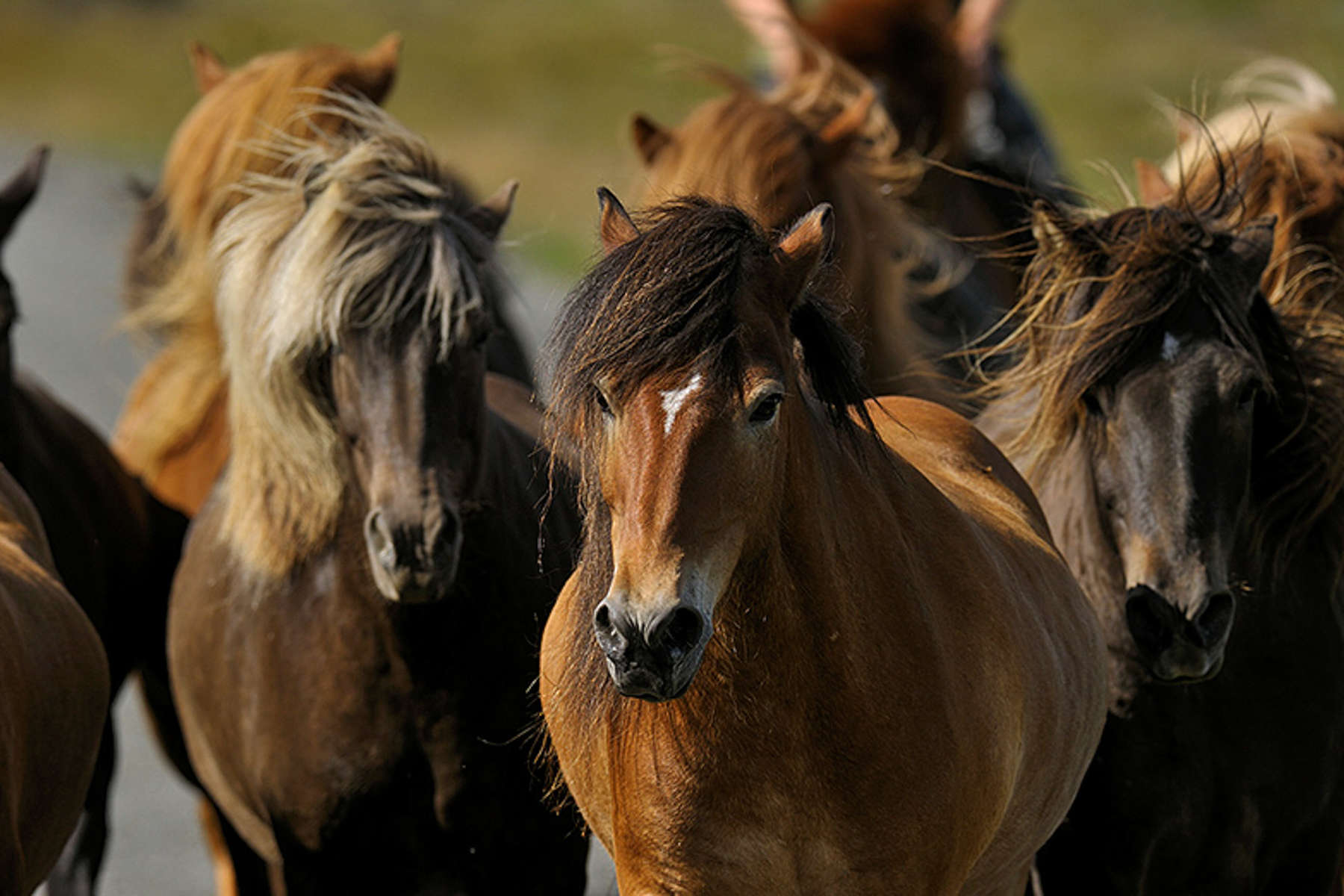The Icelandic Horse
The Icelandic horse can be traced back to the settlement of the country in the late 9th century. Norwegian traders, later called Vikings, brought their best horses with them - mainly of Germanic descent but with some Celtic influences as well. Selective breeding developed the Icelandic into the horse we know today - a breed that has remained pure for over 1,000 years. There is only one breed of horse in Iceland - the hardy Icelandic horse has survived where many other breeds were eliminated through cold and starvation. In the 1780's much of the breed was wiped out in the aftermath of a volcanic eruption but they have since thrived and are used for traditional farm work as well as for leisure, showing and racing. Icelandic horses have few diseases in Iceland and therefore Icelandic law prevents horses from being imported into the country, and once exported an animal can never return.
Breed Characteristics
The Icelandic horse is famous for having five gaits - walk, trot, canter/gallop, tölt and flying pace. These five paces were common in European horses in the early millennium before various breeding selections and whilst some breeds have still retained a fourth pace (for example the Peruvian Paso), the Icelandic horse is the only one who has retained all five.
The tölt is a speciality of the breed. It is a smooth four beat gait in which the horses legs move well under the body. The tölt can vary in speed, from a slow, melodic and gracious tolt to a very fast and extended tolt - but all tölts should be smooth and extremely comfortable for the rider.
The flying pace is a two-beat lateral gait, where both the fore and hind limb on one side move together (unlike the trot, where the limbs move as diagonal pairs). Not all Icelandics can perform the flying pace but those that can are considered to be the best of the breed. The flying pace is used in pacing races where horses can reach speeds of 30 miles per hour.
The Icelandic horse is robust and hardy having adapted to the harshness of the climate within the Arctic Circle. They are small in stature, standing 13 - 14 hands, but are definitely considered a horse and not a pony. They are broad and muscular with short, strong legs and a very full mane and tail. They also have a double coat which has developed to provide greater insulation in cold temperatures. The Icelandic horse comes in many coat colours and in Icelandic language there are over 100 names for various colours and coat patterns.
Despite their small size they can easily carry a grown man of 80 - 100kg. They have spirited temperaments and are very intelligent as well as being docile and willing to work for their rider. They are a slow growing and long-lived species, so are unlikely to be backed and ridden before five years of age and can live to be 40 years old.
Riding in Iceland
On a riding trail in Iceland it is quite common for the herd to accompany the group of riders. This is a traditional practice within Iceland so that riders can swap onto a new horse periodically throughout the day. When the horses are being used to herd sheep etc, they can work very hard at speed across technical terrain and so the farmer would swap onto a fresh horse to give his previous mount time to recover. This practice is continued on our long riding trails so that you can move on at tolt or canter without tiring the horses. Riding with the free moving herd is an exhilarating experience and can present challenges, therefore only those trails aimed at strong intermediate and competent riders will include the herd. In addition to our trail rides in Iceland, we offer our riders the opportunity to participate in an annual sheep round-up or horse drive.
Disinfection
To protect the Icelandic horse from disease, it is forbidden to take used riding equipment into the country unless it has been thoroughly disinfected. Used leather goods which cannot be disinfected cannot be taken at all - this includes saddles, bridles and boots. All riding equipment - clothes, shoes, hats - must be washed at 40c or thoroughly disinfected using a Virkon solution which can be bought from most tack shops.

